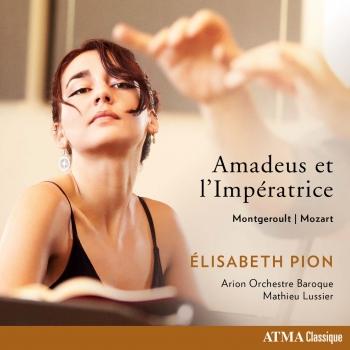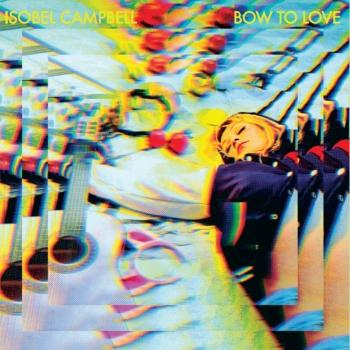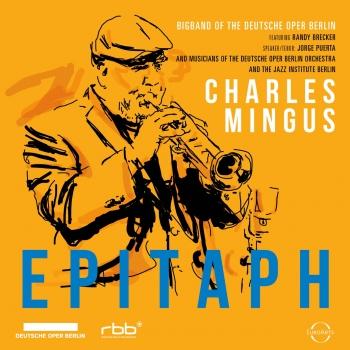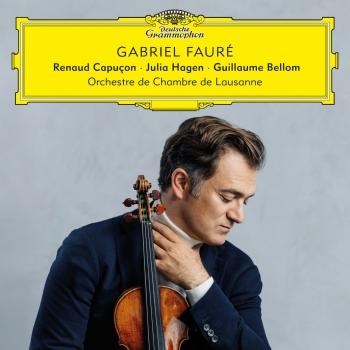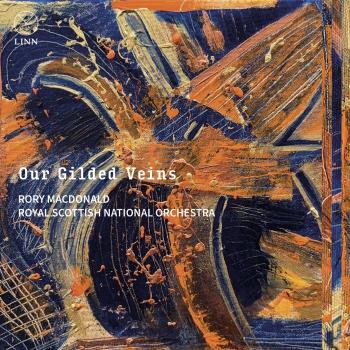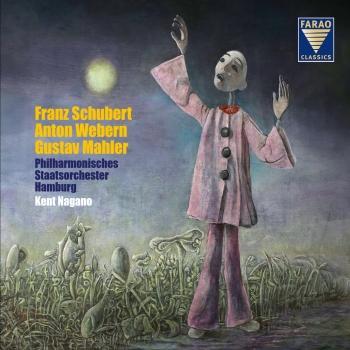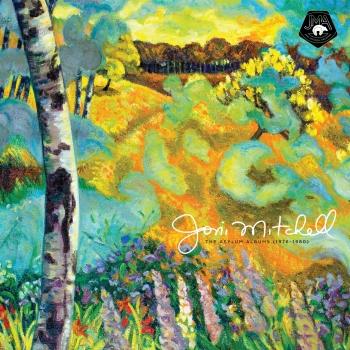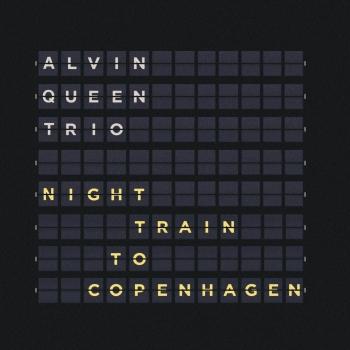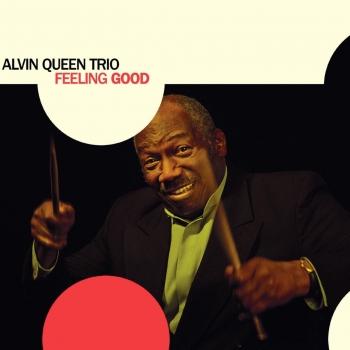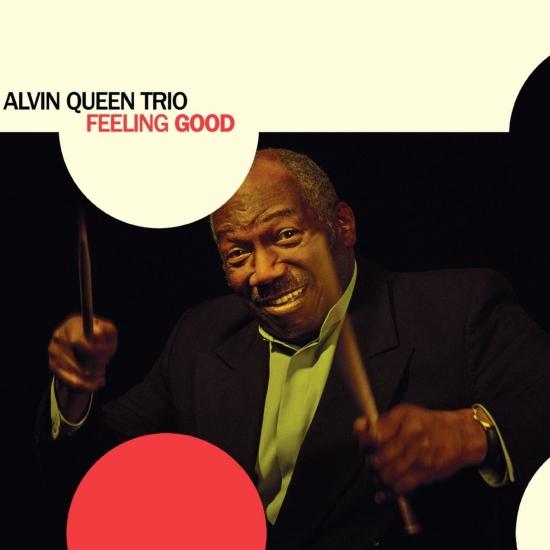
Feeling Good Alvin Queen Trio
Album Info
Album Veröffentlichung:
2024
HRA-Veröffentlichung:
14.06.2024
Das Album enthält Albumcover
- 1Out of This World06:01
- 2It Ain't Necessarily So04:09
- 3Waltz for Ahmad03:38
- 4Bleecker Street Theme06:40
- 5Love Will Find a Way04:00
- 6The Night Has a Thousand Eyes05:35
- 7Spartacus Love Theme03:39
- 8Feeling Good03:51
- 9Firm Roots05:04
- 10Send In The Clowns03:23
- 11Falling In Love With Love05:59
- 12Someone to Watch Over Me03:43
- 13Three Little Words06:00
Info zu Feeling Good
Die amerikanische Schlagzeuglegende Alvin Queen knüpft mit „Feeling Good“ an den Erfolg seiner früheren gefeierten Wiederveröffentlichungen an, einem fachmännisch zusammengestellten Programm mit dreizehn Songs (neun auf der LP), die amerikanische Musik und Kultur in all ihren vielen Formen repräsentieren. Zwei Musiker, die ideal für das Standardformat eines Piano-Jazz-Trios geeignet sind – Carlton Holmes am Klavier und Danton Boller am Bass – vervollständigen die Gruppe.
Alvin Queen soll gesagt haben, dass er bei aller Exzellenz lieber keine Aufnahmen mit prominenten Jazzstars machen möchte. Stattdessen zieht er es vor, mit relativ unbekannten Musikern zusammenzuarbeiten, die eine größere Aufmerksamkeit verdienen. Eine bewundernswerte Haltung, auch wenn es traurig ist, zu erkennen, dass interessante Starbesetzungen, die sich fast jeder im Jazzbereich vorstellen kann, nie das Licht der Welt erblicken werden. Im letzten halben Jahrzehnt ist Queen seinen Worten treu geblieben und hat zwei Oscar-Peterson-Hommagen mit jungen Löwen aus Dänemark und Schweden veröffentlicht.
Hier ist ein weiteres Werk für die Bücher. Die Schlagzeuglegende Queen, deren Lebensgeschichte sich wie ein Jazzmärchen liest und die unter anderem von Flophouse in zwei Teilen hier und hier beschrieben wurde, hat den Pianisten Carlton Holmes und den Bassisten Danton Boller zusammengebracht. Keine Stars vielleicht, aber doch Typen mit beeindruckenden Referenzen. Holmes ist ein erfahrener Musiker, der mit einer Vielzahl von Größen wie Lionel Hampton, Freddie Hubbard, Branford Marsalis und Diane Reeves gespielt hat. Boller gehörte zur Spitze der Roy Hargrove-Gruppen und arbeitete u. a. mit Mulgrew Miller, Ari Hoenig, Steve Nelson und Robert Glasper zusammen.
Carlton Holmes, Klavier, Synthesizer
Danton Boller, Bass
Alvin Queen, Schlagzeug
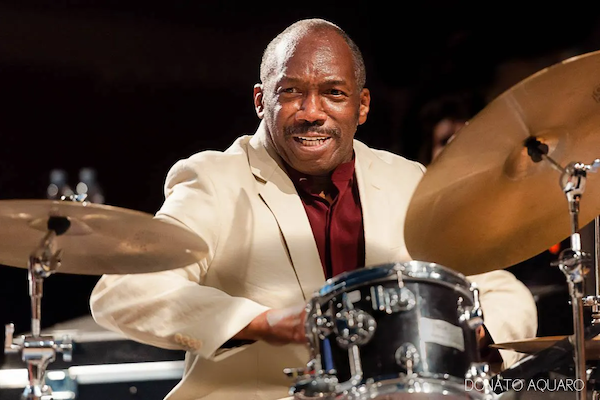 Alvin Queen
Alvin Queen
was born on August 16, 1950, in the Bronx, New York, but his family relocated to Mt. Vernon when he was 2 years old. The Queens were poor, but the Levister Towers Projects, where Alvin grew up, proved to be rich territory, as he was surrounded by many individuals who, like him, sprouted into the leading exponents of their generation.
There were scores of musicians, like sax men John Purcell and Jimmy Hill; vibraphonist Jay Hoggard; pianist Tommy James; B-3 organ champ Richard Levister; his swinging brother, Millard Levister on drums; and far too many others to name. And Alvin's list of celebrity running mates didn't end with musicians; they included future NBA stars like Ray Williams of the New York Knicks and Gus Williams of the Seattle Supersonics.
Alvin's hoop skills, however, were limited to the neighborhood courts, where he'd go head-to-head at the infamous Fourth Street playground with other wannabe hardwood stars, which included future Academy Award winner Denzel Washington. In fact, it was Denzel's father, Elder D. Washington Sr., who was pastor of the First Church of God In Christ, where Alvin's grandmother was a member. That church ended up playing a pivotal role in Alvin's life, because it's where he got his first dose of spirit-filled music, and -- after he began singing in the choir and playing the tambourine - it's where he began connecting with and conveying the rhythms of his life.
Alvin was introduced to the drums at an early age by his brother, Willie Queen, who was a standout percussionist at with the Grime School Marching Band. It was Willie who convinced Alvin that this was something he should stick with. While Christmas shopping with his mother one morning, Alvin spotted a kid playing drums in the second-floor storefront window of the Andy Lalino Drum Studio. At the time, Alvin had been earning some change shining shoes, but dreams of pulling together enough money to get his own drum set were just that - dreams.
But while shining shoes wouldn't get him the money he needed, it did give him an excuse to meet the studio owner. So one day, Alvin, shoe shine kit in hand, wandered up the stairs of the studio and asked Andy Lalino if he wanted a shine.
That’s how it all began. “You know anything about playing drums?” Andy asked.
“Well, I play for the Grime School Marching Band, and I’d love to play your drum set,” Alvin replied.
“OK, then have your mother give me a call,” he said.
Alvin’s mother contacted Lalino and Alvin started lessons. But money was tight, and the lessons were one of the first things that had to go.
Fortunately, though, Andy decided to keep Alvin around the studio for odd jobs and an occasional shine.
Free lessons were a bonus.
Alvin was introduced to jazz at an early age. Every Saturday, his father would take him to Harlem to have his hair done at Sugar Ray Robinson’s barbershop. Afterward, he’d take Alvin to the Apollo to catch a show before heading back to Mount Vernon. He’d see such lions as John Coltrane; the Cannonball Adderley Quintet, featuring Nancy Wilson; and Ruth Brown, who would end up giving Alvin one of his first professional gigs.
During the early ’60s, there were many places to check out jazz in Mount Vernon, too. The city might have been only four square miles, but there were at least eight clubs in the tiny town.
In fact, it was in Mount Vernon that Alvin played his first date. It was at a club called the Ambassador Lounge, with the Jimmy Hill Trio, featuring Richard Levister.
The drummer couldn’t make the date at the last minute, and Jimmy Hill came to Alvin’s parents’ home to see if Alvin could help out. Alvin was just 11 years old, and the only way he could get in was to be escorted by an adult. But Alvin knew all the tunes, thanks to his father’s record collection, and the word was out that he was “the man,” despite his young age.
“This is how my professional music career started,” Alvin says, “Thanks once again to people like Jimmy Hill and Tina Sattin, who helped out so many kids in the Westchester area, working with us through the YTI in Yonkers, to keep us on the right track.”
That same year, it was Andy Lalino who escorted Alvin to the original Birdland on 52nd street for the annual Gretsch Drum Night.
Andy seated his student right next to an all-star lineup of drummers: Art Blakey, Elvin Jones, Mel Lewis, Charlie Persip and Max Roach. And after Alvin played, they all poured accolades on the young prodigy for his performance.
A year later, Alvin did his first recording at the age of 12, but the recording was never released. Joe Newman was the contractor and musical director; the musicians included Joe Newman on trumpet; Zoot Sims on tenor sax; Art Davis on bass; Hank Jones on piano, on only one side; and Harold Mabern, playing piano on the other side.
Despite the whirlwind of musical opportunities that had come Alvin’s way up to that point, he sees the following year, 1963, as the “big night” in his early jazz experience. That’s when John Coltrane was performing at Birdland, and Alvin happened to be on hand for the recording of the now-famous “Live At Birdland” album, featuring the tune Afro Blue. Elvin Jones sat Alvin at the front table – “under the drums” – next to Elvin’s wife.
“Elvin started the set out with John and played a few numbers,” Alvin remembers. “Then he said the kid has to learn this stuff, and he put me up on the drums. It was the greatest opportunity of my life, to sit in with the great John Coltrane!”
During this time, Alvin was still shining shoes to keep some change in his pocket. But his sidewalk business played a much more important role than financial: It allowed him to stay in touch with the musical giants of the era, as he buffed the shoes for the likes of Blakey, Ben Webster, and Thelonious Monk.
But Alvin’s reputation far surpassed his prowess as a shoeshine man. By age 15 he began to frequent the various Manhattan jam sessions in nightclubs and lofts. There was the Doom, across from the Five Spot Café on St. Mark Street, where he’d meet up with Tony Scott, Walter Bishop, Jr., Reggie Johnson, and Walter Perkins.
There was also the famous East Side club, Slug’s, a favorite of players like Lee Morgan, J.C. Moses, and Jackie McLean, among others.
Then he’d often pop into an after-hours joint run by vibraphonist Ollie Shearer. “This is where I met Kenny Barron, Marvin Pertilo and Dick Berk,” Alvin recalls.
Alvin also started getting out of the New York area. He’d travel down to the Gracie Belmont Club in Atlantic City to work with the Wild Bill Davis Organ Trio, with Dickey Thompson on guitar. Alvin was 16. ...
Dieses Album enthält kein Booklet

